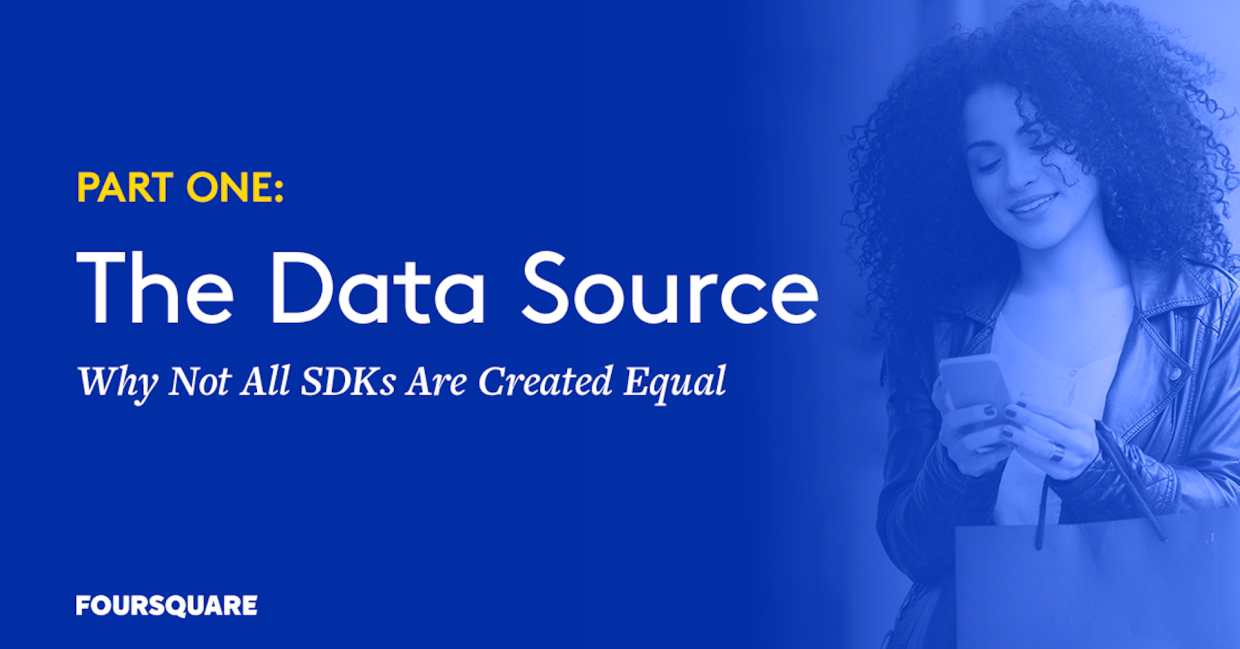While data-driven marketers increasingly rely on location intelligence for campaign measurement and foot traffic insights, they consistently face the problem of accuracy—poor quality data can lead to wasted dollars. Consumer-facing industries such as retail or quick-service restaurants (QSR) have even more at stake when decisions are driven by bad data: their relationship with their customers. Because the impact of low quality data on marketing effectiveness can be significant, a third of digital marketers surveyed expressed a growing concern with location data quality, according to eMarketer.
But, what do we mean by location data? Inclusive of more basic attributes such as name and address, as well as more complex data sets such as the number and frequency of visits, each presents their own quality challenges. Because the latter, however, marries both data and technology to determine whether a “visit” has actually occurred, accurate visit data can be doubly challenging.
To help marketers better assess online-to-offline campaign measurement and foot traffic analytics solutions, we’ve identified which three factors to consider when evaluating visit data quality: the source of the location data, the method by which a venue’s boundary is mapped, and the technology used to detect stops.
To address each of these three issues, we’re bringing you a three-part series.
In Part One, we’ll review the ways visit data is derived, why data sourced from a proprietary software development kit (SDK) is better than from the bidstream, and what makes our data superior and differentiated (spoiler alert: it’s our Pilgrim SDK).
A Review of Data Sources: Bidstream vs. SDK
There are two main ways to derive visit data for offline campaign measurement or foot traffic analytics: bidstream and SDK. Let’s review each and explain why SDK-sourced visit data is the best for location intelligence.
The Limits of Bidstream-Derived Visit Data
Before we dive into the topic of bidstream data quality, let’s first provide a brief introduction to the technology and how it’s used to measure “visits.”
Every time an individual uses an app or website and an ad is served, details about the user’s immediate location—such as latitude and longitude and timestamp—are immediately transmitted to the publisher. These once-a-month location signals are then counted as visits, which feeds foot traffic insights. However, bidstream-sourced visit data doesn’t take rate of movement into account. That means frequent false positives and flawed insights. For instance, while an ad may be served as a smartphone user is walking past a Best Buy, it doesn’t necessarily mean that this individual has actually stopped at the location. Furthermore, data can be collected and aggregated from third party sources which are not transparent about their accuracy thresholds. Even small deviations in accuracy can lead marketers to make the wrong decision about optimization with a particular partner or for a specific channel. Comparatively, location solutions that source data via a proprietary SDK have greater visibility into which apps utilize their technology.
For example, Foursquare carefully vets which partners are eligible to use our proprietary SDK named Pilgrim. In fact, unlike competitors, we only work with companies that capture informed consent from their users. What’s more, partners must use the SDK to power meaningful geo-aware app experiences that require background location sharing. The result is more accurate insights that power our online-to-offline measurement solution, Attribution and our foot traffic reports, Analytics. Both rely on foot traffic from the largest “always-on” panel in the industry. However these aren’t the only important considerations to take into account before landing on a provider. Panel composition and SDK location-sharing permissions can also impact data quality.
Why SDK-Derived Visit Data Is More Accurate
Panel composition considers the audience breakdown of an app with a location partner’s proprietary SDK installed. Because foot traffic analytics are derived from an app’s user base, higher or lower propensities for certain users will result in insight bias. For example, if an app is skewed toward gaming enthusiasts, insights are likely to disproportionately speak to behaviors of males. Insight bias is not an issue for Foursquare, however. Our panel is comprised of users of our consumer apps as well as a diverse set of partner apps that include AccuWeather and Touchtunes. The result is representative foot traffic data that reflects the needs and behaviors of today’s consumer.
Insight quality can also vary based on what location permissions are enabled on one’s device. Essentially, it all comes down to whether you’re able to monitor a panel’s visitation trails – and location sharing permissions are the key to getting this info.
Apps that track location in the foreground only monitor a device’s movements when the app is open. As a result, location signals may be sporadic and incomplete. Comparatively, devices that track location in the background monitor consumers’ movements persistently, regardless of whether an app is open. This allows company to glean more comprehensive behavioral insights into their user’s affinities and lifestyles based on visitation patterns. Permission preferences aside, it’s important that you only source data from SDK partners that prioritize user utility and meaningful geo-aware app experiences.
To conclude—this is not just a checkbox item to consider. Apps that drive real user utility via geo-aware experiences have higher quality location signals, and as a result, more accurate enterprise solutions. What’s more, apps with background location sharing enabled, such as those that integrate Pilgrim SDK, give marketers a persistent view into one’s movements.
Comparatively, ad SDKs that are simply based on delivering ad experiences are sporadic, resulting in incomplete location signals. Therefore, it’s important to remember, while SDK-derived visit data is better than bidstream, not all SDKs are created equal.
Key Takeaways
The bottom line is that it truly matters how and where visit data is derived. Bidstream-sourced data is simply not effective for accurately measuring true visits. Instead, stick with SDK-sourced data for foot traffic and campaign measurement insights.
But remember, not all SDKs are the same—Pilgrim is the only SDK that powers persistent location awareness and meaningful location-aware experiences, resulting in higher foot traffic quality.



